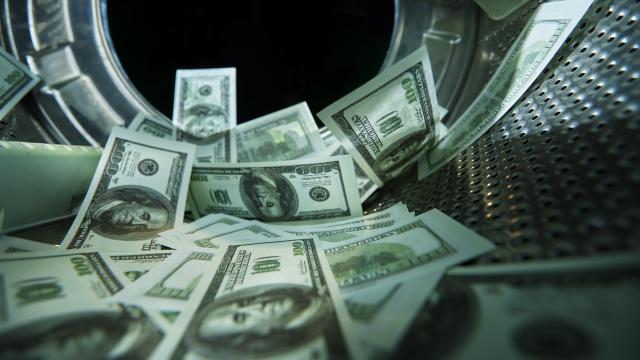If you’re like me, you’ve aced “Money Laundering 101″ via hit shows like Ozark and Breaking Bad. (The linked examples are highly entertaining explanations of how money laundering works in their TV worlds, for reference.)
Laundering money does not, of course, refer to literally sanitizing your cash — laundering is the process making illegally-obtained money appear to come from seemingly legal business operations to avoid the wrath of the IRS or law enforcement. While we here at Lifehacker would never dream of endorsing financial crimes, here’s what to know about how people launder money these days.
What is money laundering, exactly?
As we’ve previously covered, money laundering is the process of making money obtained through illegal means, e.g. drug sales, look like it was legally earned. There are a number of different channels to clean up dirty money, but there are usually three basic steps involved: Placement, layering, and integration. Here’s a brief overview of how each stage works:
1. Placement. This is where the dirty money is placed into seemingly legal assets. This is where criminals initially introduce their wealth into the financial system, and is where they’re most vulnerable to getting caught.
2. Layering. This step is to further distance the money from its dirty origins. It can take the form of transfers between multiple bank accounts, as well as making expensive purchases. Casinos are a prime example of layering, since large sums of money will trade hands, essentially being “washed” over and over again every night. A savvy launderer will build an intricate web that’s difficult to trace, like moving money to one offshore account, then transfer it to a shell company, then to another shell company, and on and on.
3. Integration. After money has been cleaned, it can be integrated into mainstream financial channels. The original criminal can now access their money through perfectly “legitimate” channels, like buying property or another shell company for even more laundering.
Methods of money laundering
The most obvious image of money laundering is some sort of cash business, like a car wash or strip club. There are countless ways to launder money, and the digital age has only made it easier for the pros to innovate the laundering game. Here are some of the most common techniques and channels people use to launder money:
- Disguising dirty money through gambling in casinos, investing in real estate, or opening shell corporations.
- Using “smurfs,” aka exchanging dirty money in small chunks to make the grand sum of funds harder to detect.
- Trade-based laundering, where they mess with the price and quantity of imports and exports to create a paper trail of false profits.
- Owning a bank or mortgage company where they can move money between financial institutions pretty easily.
- Opening foreign accounts and taking advantage of foreign exchange rates.
- Committing online banking fraud by transferring money directly into a victim’s account and then making unauthorised payments from their account.
- Loading and redeeming online payments, like with pre-paid gift cards.
The bottom line on money laundering
Money laundering is a key operation of organised crime, and it’s evolving: New technologies and cryptocurrencies give launderers new ways to beat the ever-changing system. At the same time, law enforcement and governmental agencies keep adapting to detect money laundering schemes, too. And while we’ve had fun here today, remember that money laundering is a highly-illegal activity. Not every “how to” article is an endorsement.

Leave a Reply
You must be logged in to post a comment.